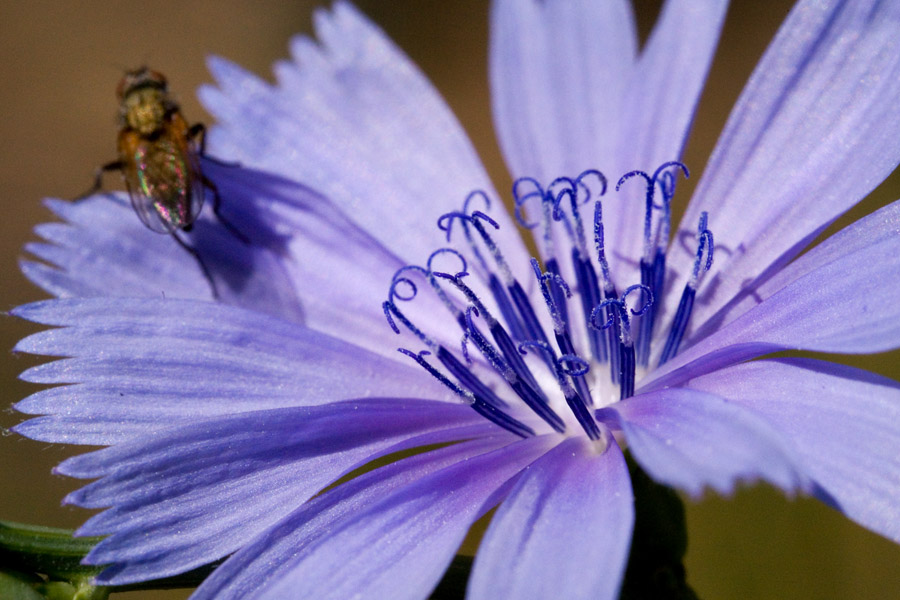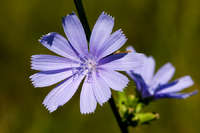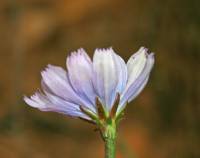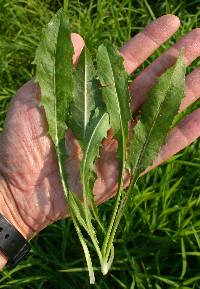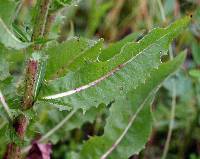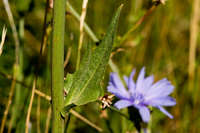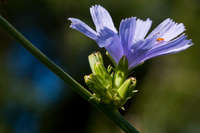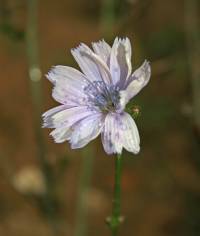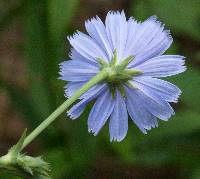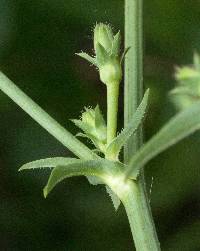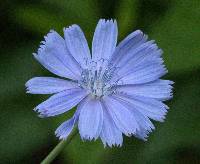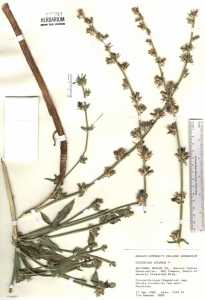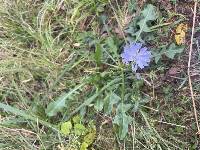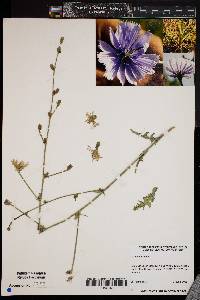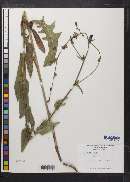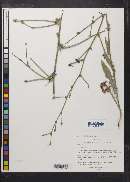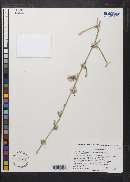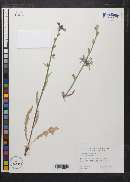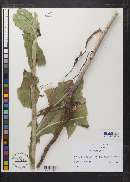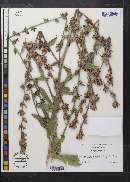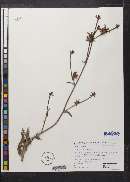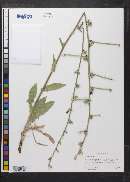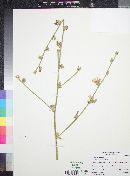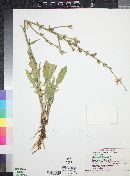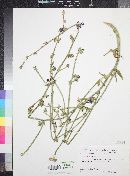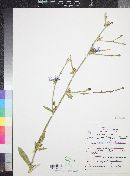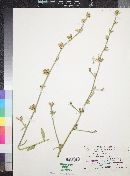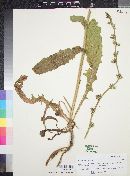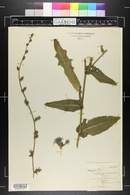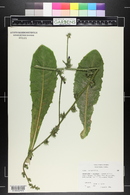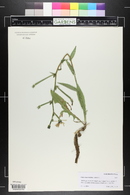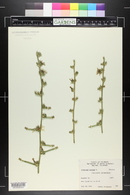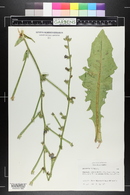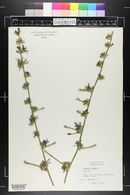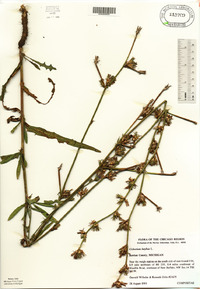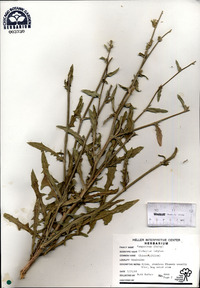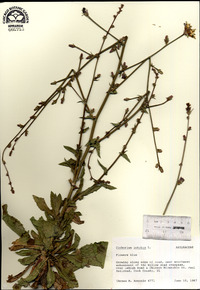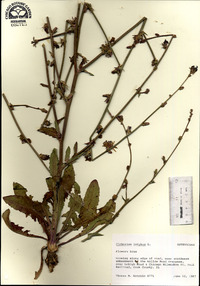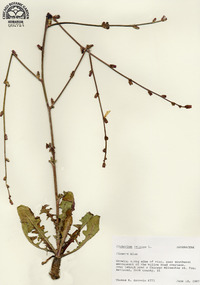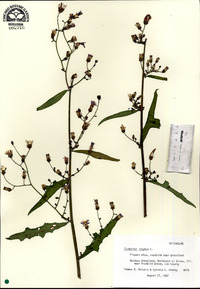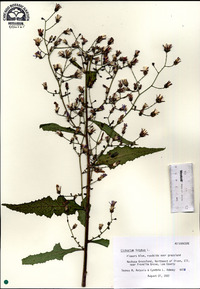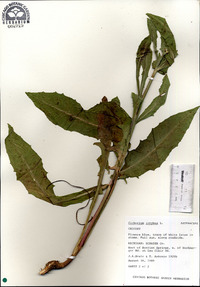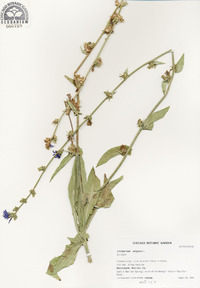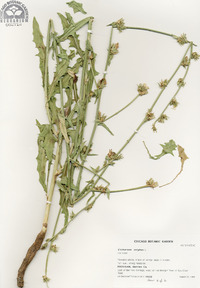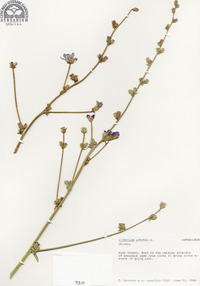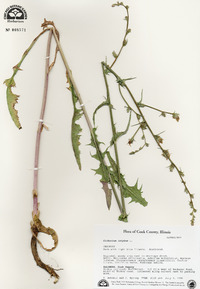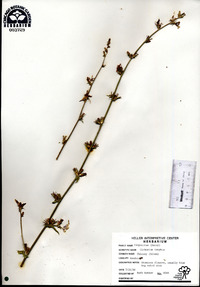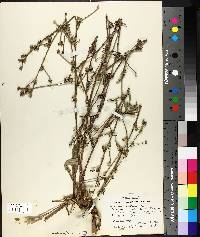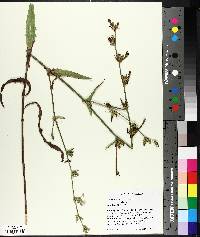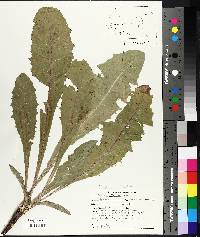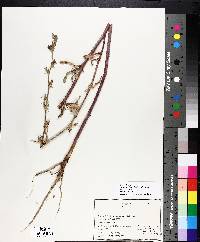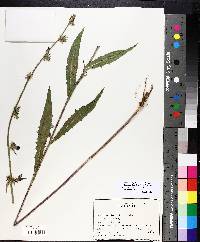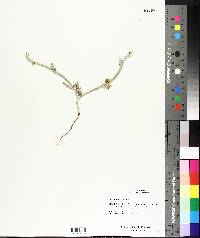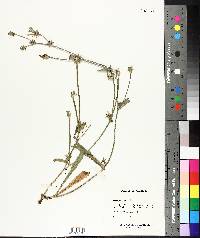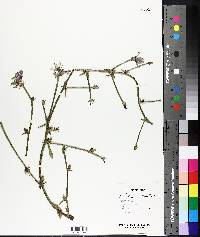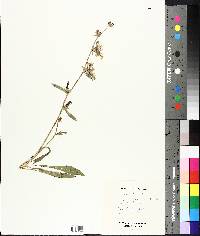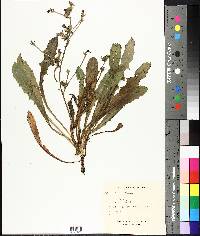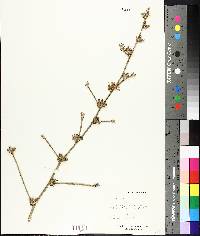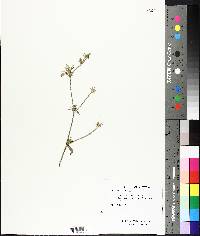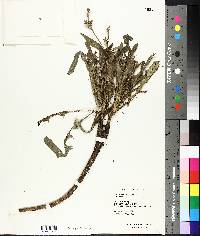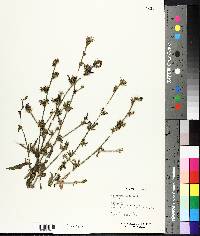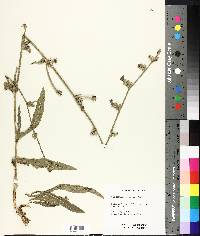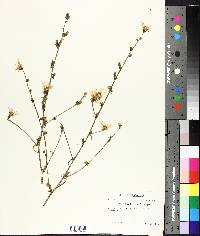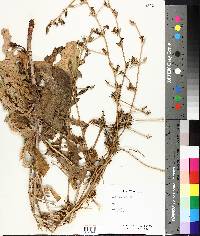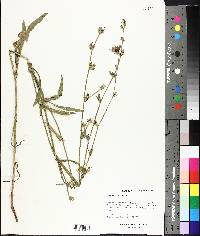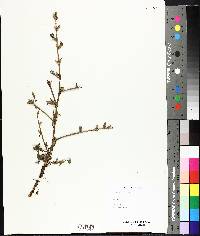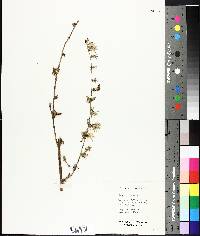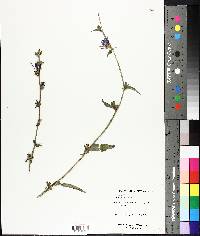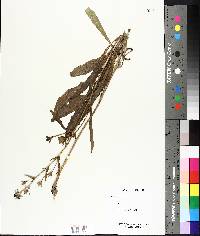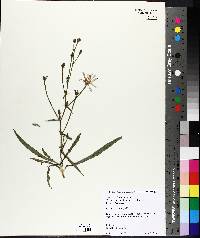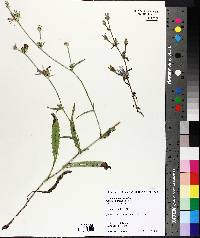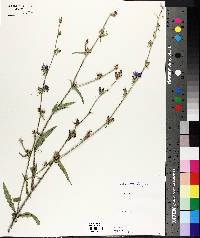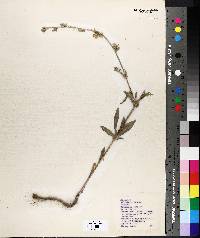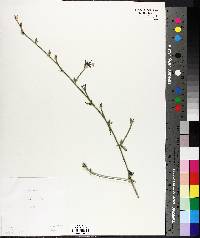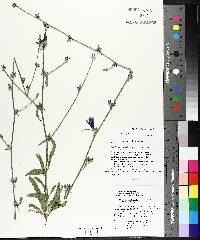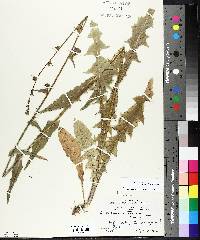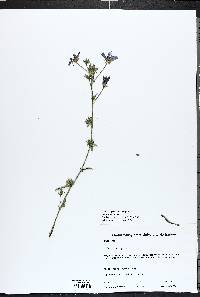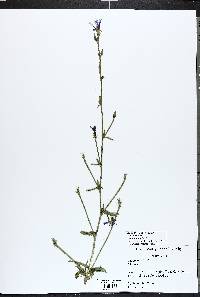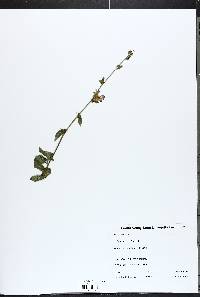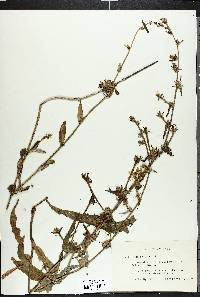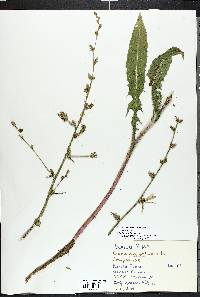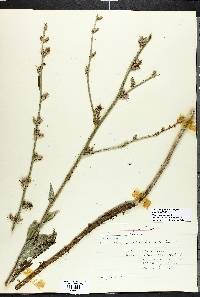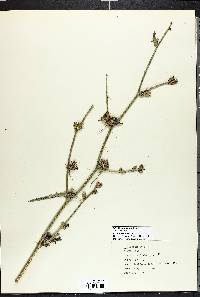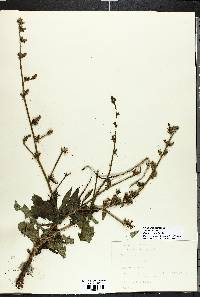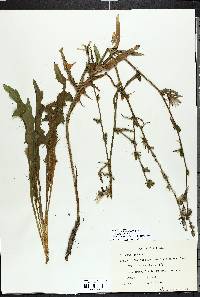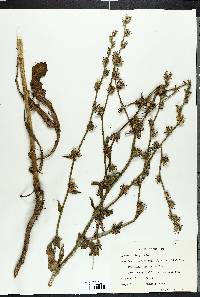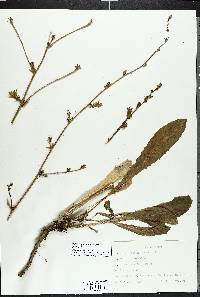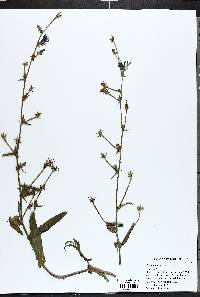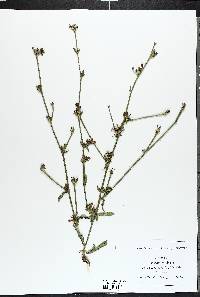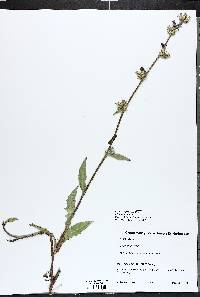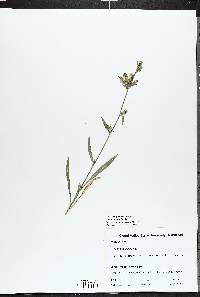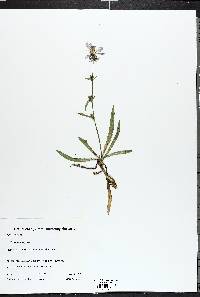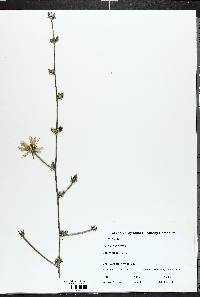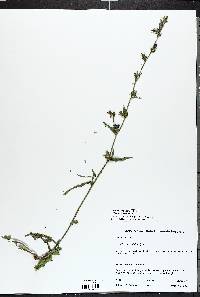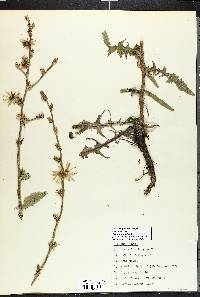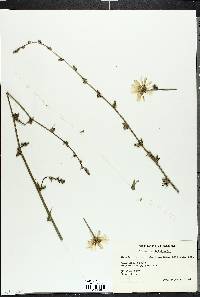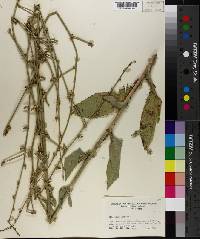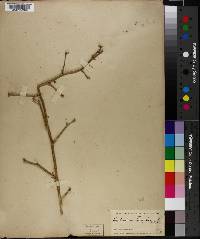Cichorium intybus
|
|
|
|
Family: Asteraceae
Chicory
[Cichorium intybus var. foliosum, moreCichorium intybus var. sativum] |
Perennials (sometimes flowering first year). Leaves: blades of basal 5-35+ × 1-8(-12+) cm; cauline similar, smaller, narrower, distal mostly linear. Peduncles mostly 0-2 mm, some narrowly clavate, 12-45(-85+) mm. Phyllaries: outer 5-6 lance-ovate to lanceolate, 4-7 mm, basally cartilaginous, distally herbaceous, inner 8+ lance-linear to linear, 6-12 mm, herbaceous, all usually with some gland-tipped hairs 0.5-0.8 mm on margins near bases or on abaxial faces toward tips. Cypselae 2-3 mm; pappi 0.01-0.2 mm. 2n = 18. Flowering Apr-Jul. Disturbed sites; 0-1500 m; introduced; St. Pierre and Miquelon; Alta., B.C., Man., N.B., Nfld. and Labr., N.S., Ont., P.E.I., Que., Sask.; Ark., Calif., Conn., Ill., Ind., Iowa, Kans., Maine, Mass., Mich., Mo., Nev., N.H., N.Y., N.C., Pa., R.I., Tex., Utah, Vt.; Europe; Asia; introduced also in Africa, South America. Leaves of Cichorium intybus are sometimes used as salad greens; the roasted roots are sometimes ground and used as an addition to (or adulterant of) coffee.
FNA 2006, Kearney and Peebles 1969, McDougall 1973 Duration: Perennial Nativity: Non-Native Lifeform: Forb/Herb General: Herbaceous biennials or perennials, stems erect and branching, to 100 cm tall, glabrous-hispid, with a deep-seated taproot. Leaves: Alternate, mostly basal, cauline leaves clasping, with toothed margins, the leaves of the branches reduced, lower leaves rucinate-pinnatifid. Flowers: Heads ligulate, ligules blue, pink, or white, phyllaries in 2-series, the outer 5, short, ovate, these corky-thickened at the base with age, the inner 8-10, linear, heads borne sessile in interrupted groupings of double involucres along the stems, in branch axils, or at branch tips. Fruits: Achenes obovoid, 5-angled, glabrous. Pappus a short, toothed crown in 2-3 series. Ecology: Found in disturbed areas and along roadsides, from 0-5,000 ft (0-1524 m); flowering April-July. Distribution: This is a widespread, weedy species, occurring from Canada throughout the United States. Notes: At first glance this species looks like a Hedeoma or other member of the mint family, with its long stems rising above the foliage and inflorescences borne in interrupted, whorled clusters along the stem. Look to the stem (round, not square) to help differentiate this species, as well as the margins of the lower leaves, which are rucinate-pinnatifid, which means pinnatifid but with the margins saw-toothed, the divisions facing backwards. This species is common throughout the United States, and is naturalized from Europe. This species shares the same genus as endive, which resembles the lower leaves. Older texts report this species occurring as high as 7,000 ft. Ethnobotany: An infusion of the roots was used as a tonic for nerves, and as a wash for chancres and fever sores. The leaves were eaten as greens, and the roots were roasted and used in place of or combined with coffee. Etymology: Cichorium is the Latinized version of the Greek kichore, the common name for chicory, while intybus is derived from the Egyptian tybi, January for the month this species was eaten. Synonyms: None Editor: LCrumbacher 2011 Perennial 3-17 dm from a long taproot; lower lvs oblanceolate, petiolate, toothed or more often pinnatifid, 8-25 נ1-7 cm, becoming reduced, sessile, and entire or merely toothed upwards; heads to 4 cm wide in fl, mainly matutinal, sessile or short-pedunculate, borne 1-3 together in the axils of the much reduced upper lvs, the long branches thus racemiform; invol 9-15 mm, its outer bracts loose, fewer than the inner and at least half as long, becoming callous-thickened at base; achenes 2-3 mm, pappus-scales numerous, minute, narrow; 2n=18. Roadsides, fields, and waste places; native of Europe, now a cosmopolitan weed. June-Oct. Gleason, Henry A. & Cronquist, Arthur J. 1991. Manual of vascular plants of northeastern United States and adjacent Canada. lxxv + 910 pp. ©The New York Botanical Garden. All rights reserved. Used by permission. From Flora of Indiana (1940) by Charles C. Deam This species is now found throughout the state and in many parts has become an obnoxious weed. When once established, I have found from personal experience that it is very difficult to eradicate. Our first reports for it say: "an escape from gardens." In recent years it doubtless has been introduced in grass and other seeds. The dried roots are used as a substitute for coffee, and it has been cultivated for that purpose. My bitter experience with it compels me to advise against its use in the flower garden and to exterminate it wherever it is found. All of my specimens are from hard, dry clay or dry, sandy soils. Plants with white flowers, forma alba Farwell, are sometimes found. In a colony extending for nearly a half-mile in hard, clay soil along an unimproved road in Allen County I estimated that 40 per cent of the plants were white-flowered. |
|
|
|

